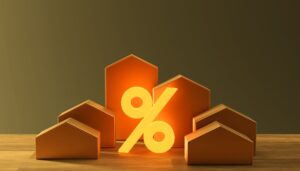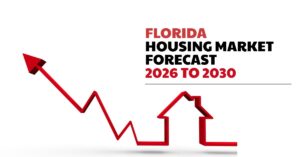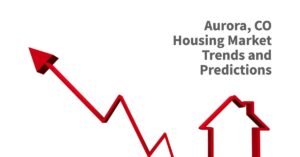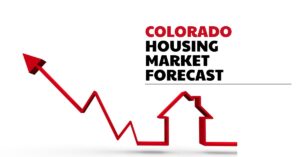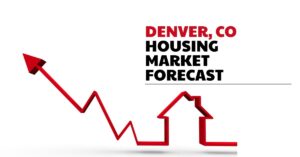If you’re waiting on the sidelines, hoping for a return to the “free money” mortgage rates of the early 2020s, I have to be blunt: that ship has sailed. However, the anxiety about rates spiraling toward 8% has cooled down significantly. For the first quarter of 2026, I forecast that the average 30-year fixed mortgage rate will settle into a relatively stable band between 6.0% and 6.4%, likely averaging around ***6.15%***.
This level reflects a cautious equilibrium in the economy—enough inflation stabilization to prevent spikes, but not enough weakening to force the Federal Reserve into the aggressive rate cuts everyone is hoping for.
The start of 2026 feels less like a crisis and more like a stubborn waiting game. We are entering a period where rates are elevated but predictable, which, frankly, is a welcome change for everyone who spent 2023 watching the market swing wildly week after week.
Mortgage Rates Predictions for the Quarter Ending March 2026
Where We Stand Right Now: A Tentative Breather
As we flipped the calendar into January 2026, the mortgage market offered a small gift: the 30-year fixed rate settled at 6.15%, according to the latest Freddie Mac data. This slight dip from December’s close (6.18%) might seem minor, but it matters. It confirms a stabilization trend that began toward the end of 2025.
What I observe is that the market tried hard to push rates higher in the latter half of 2025, but signs of cooling inflation and a softening job market prevented a major breakout. This 6.15% starting point means that the psychological barrier we have been dealing with—the high 6s and low 7s—is currently behind us.
The real question isn't whether rates will return to 3%; they won't. The real question for the first three months of 2026 is whether we can see sustained downward pressure that pushes the bulk of activity below 6.0%. In my expert opinion, while possible, it is not the most likely outcome for Q1.
The Rollercoaster Ride: Why History Matters So Much
To understand where we are going, we need to remember where we’ve been. I’ve watched this market swing dramatically over the past few years, and I can tell you these historical patterns offer invaluable clues.
- 2020–2021: The era of rock-bottom rates. Thanks to the Federal Reserve trying to insulate the economy from the COVID-19 pandemic, we saw rates plummet below 3%. This created a massive wave of refinancing and allowed millions of people to buy homes they otherwise couldn't afford.
- 2022–2023: The Inflation Shock. As the economy roared back and inflation soared, the Fed aggressively hiked its benchmark rate, pulling long-term mortgage rates with it. This was a brutal adjustment, leading to rates creeping toward 7% and housing sales freezing up.
- 2025: Volatility stabilized, but rates stayed elevated, hovering near an annual average of about 6.60%.
The market needs stability now. And the fact that we ended 2025 around 6.15% tells me that the majority of the sharp corrections are behind us. But remember, the quick drop many experts hoped for in Q4 2025 didn't materialize entirely. Why? Because the underlying economic pressures (namely sticky services inflation and a still-robust labor market) didn't give the Fed the green light to cut aggressively. This reluctance dictates our forecast for early 2026.
The Core Mortgage Rate Forecast: Q1 2026 Numbers and Expert Consensus
When I look at the predictions coming from major players like Fannie Mae and the Mortgage Bankers Association (MBA), I see a narrow band of agreement that gives me confidence in the 6.0% to 6.4% range.
No one is calling for rates to plunge to 5% instantly, but almost no one is predicting a catastrophic return to 7% either.
Here is a summary of the consensus forecasts for the 30-year fixed rate during the first quarter of 2026:
| Source | Q1 2026 Forecast (30-Year Fixed) |
|---|---|
| National Association of Realtors (NAR) | 6.00% |
| Wells Fargo | 6.15% |
| National Association of Home Builders (NAHB) | 6.17% |
| Fannie Mae | 6.20% |
| Mortgage Bankers Association (MBA) | 6.40% |
| Consensus Average | 6.18% |
The most interesting difference here is between the optimistic outlooks (like NAR's belief that cooling demand will yield 6.00%) and the more conservative stances, like the MBA holding steady at 6.4%. The MBA tends to be slightly more conservative because they closely track lending activity and understand the financial institution’s reluctance to lower rates too quickly until they see sustained economic data shifts.
My personal take aligns closely with the 6.15% midpoint. I feel that the market has largely priced in the expected economic weakening. A rate below 6.0% would require some surprise negative economic news—like a sudden spike in unemployment—which would be good news for borrowers, but bad news for the overall economy.
Digging Deeper: The Forces Driving Rates in Early 2026
Mortgage rates don’t just happen—they are a complex reflection of the bond market, specifically the 10-year Treasury yield, combined with what we call the “spread” (the risk premium lenders charge). Here are the primary drivers I am watching closely through Q1 2026:
1. The Federal Reserve’s Steady Hand
The largest influence remains the Fed. While the Fed doesn't directly set mortgage rates, they control the short-term Federal Funds Rate, which anchors the entire yield curve.
- The Constraint: The market is only anticipating one 0.25% cut in 2026. If the Fed announces that they are delaying this cut until mid-year, or signal they might cut more, it sends massive signals to the bond market.
- Expert Insight: Because inflation (particularly in housing and services) has proven so difficult to suppress completely, the Fed will likely remain deliberately cautious. Their priority is price stability, even if it means keeping borrowing costs “sticky high.” This conservative approach is the single biggest reason why we likely won't break 5.8% to the downside in Q1.
2. Sticky Inflation and Treasury Yields
The 10-year Treasury yield is the engine of the 30-year mortgage rate. Typically, the mortgage rate sits about 1.5% to 2.0% above the 10-year yield. If the 10-year yield is holding around 4.2%, it logically pushes mortgage rates into the 6.0% to 6.2% range.
The underlying concern here is inflation. If the Consumer Price Index (CPI) cools nicely toward the Fed's 2% target, the 10-year yield may drop below 4.0%. However, if inflation bounces back—perhaps due to rising energy costs or global instability—the yield will climb, pushing rates toward the 6.4% prediction from the MBA.
3. The Labor Market Dynamic
The health of the job market is our double-edged sword.
| Factor | Bullish for Lower Rates (Q1 Impact) | Bearish for Higher Rates (Q1 Impact) |
|---|---|---|
| Fed Cuts | One cut early in the year | Delayed or none until mid-year |
| Inflation | Cools to 2% target | Stays above 2.5% on services |
| Treasury Yields | Falls below 4% | Rises on growth optimism |
| Labor Market | Unemployment climbs above 4.5% | Job gains exceed 200K/month |
Right now, unemployment is holding around 4.2%. As long as the job market remains this strong, it signals economic resilience, which in turn reinforces the Fed’s patient stance. We need persistent signs of weakness—like unemployment hitting 4.5% or above—to truly convince the bond market that lower rates are necessary.
Buyer and Homeowner Strategy: Making the 6% Range Work
So, what does this predictable, yet elevated, rate environment mean for you?
For most prospective buyers, a 6.15% rate still presents an affordability challenge, especially combined with high home prices. On a $400,000 loan, a 6.15% rate means a principal and interest payment of roughly $2,437 per month. This is substantially higher than the payments seen just three years ago.
For Homebuyers:
- Lock Strategically: If you are buying in Q1, be prepared to lock in a rate in the 6.0% to 6.4% range. Don't gamble on a sudden drop below 6.0%. If you wait, the risk of rates climbing back toward 6.5% due to a strong jobs report is very real.
- Explore Options: If affordability is tight, look into options like the FHA or VA loans, which may offer a slight edge (potentially around ***5.75%***) due to government backing.
- Consider the ARM: If you are certain you will move or refinance within 5 to 7 years, an Adjustable-Rate Mortgage (ARM) might offer an appealing initial rate below the fixed rate, perhaps around 5.75%.
For Homeowners (Refinancers):
The Q1 2026 forecast doesn't suggest a boom in refinancing. Most people who bought or refinanced before 2022 already have rates well below 5%. The only borrowers who truly stand to benefit are those who purchased in late 2023 or mid-2024 when rates peaked above 7%. If rates dip below 5.9% later in 2026, we could see a small wave of refinancing activity, but Q1 is likely just too early for that.
Final Thoughts on the Q1 2026 Outlook
We are likely to see stability in the mortgage market through March 2026. The extreme uncertainty is gone, replaced by a moderate level of frustration over “stuck” rates.
My closing piece of advice is to stay grounded. While I believe the rate will average around 6.15%, market fluctuations mean we could easily see weekly averages touching 5.9% or 6.5%. Buyers need to focus less on timing the lowest rate and more on finding the right home at the right price with a payment you can comfortably afford—even at the top of the 6.4% projected range. The 6% zone is not perfect, but it is proving to be sustainable for the housing market.
Invest in Fully Managed Rentals for Smarter Wealth Building
With mortgage rates dipping to their lowest levels in months, savvy investors are seizing the opportunity to lock in financing.
By securing favorable terms now, you can also maximize immediate cash flow while positioning yourself for stronger long‑term returns.
Norada Real Estate helps you seize this rare opportunity with turnkey rental properties in strong markets—so you can build passive income while borrowing costs remain historically low.
🔥 HOT NEW LISTINGS JUST ADDED! 🔥
Talk to a Norada investment counselor today (No Obligation):
(800) 611-3060
Also Read:
- No Return to Cheap Mortgages in 2026: Rates Predicted to Stay Near 6%
- Mortgage Rates Predictions for 2026 Backed by Top Housing Experts
- Mortgage Rate Predictions for the Next 3 Years: 2026, 2027, 2028
- 30-Year Fixed Mortgage Rate Forecast for the Next 5 Years
- 15-Year Fixed Mortgage Rate Predictions for Next 5 Years: 2025-2029
- Will Mortgage Rates Ever Be 3% Again in the Future?
- Mortgage Rates Predictions for Next 2 Years
- Mortgage Rate Predictions for Next 5 Years
- Mortgage Rate Predictions: Why 2% and 3% Rates are Out of Reach
- How Lower Mortgage Rates Can Save You Thousands?
- How to Get a Low Mortgage Interest Rate?
- Will Mortgage Rates Ever Be 4% Again?
